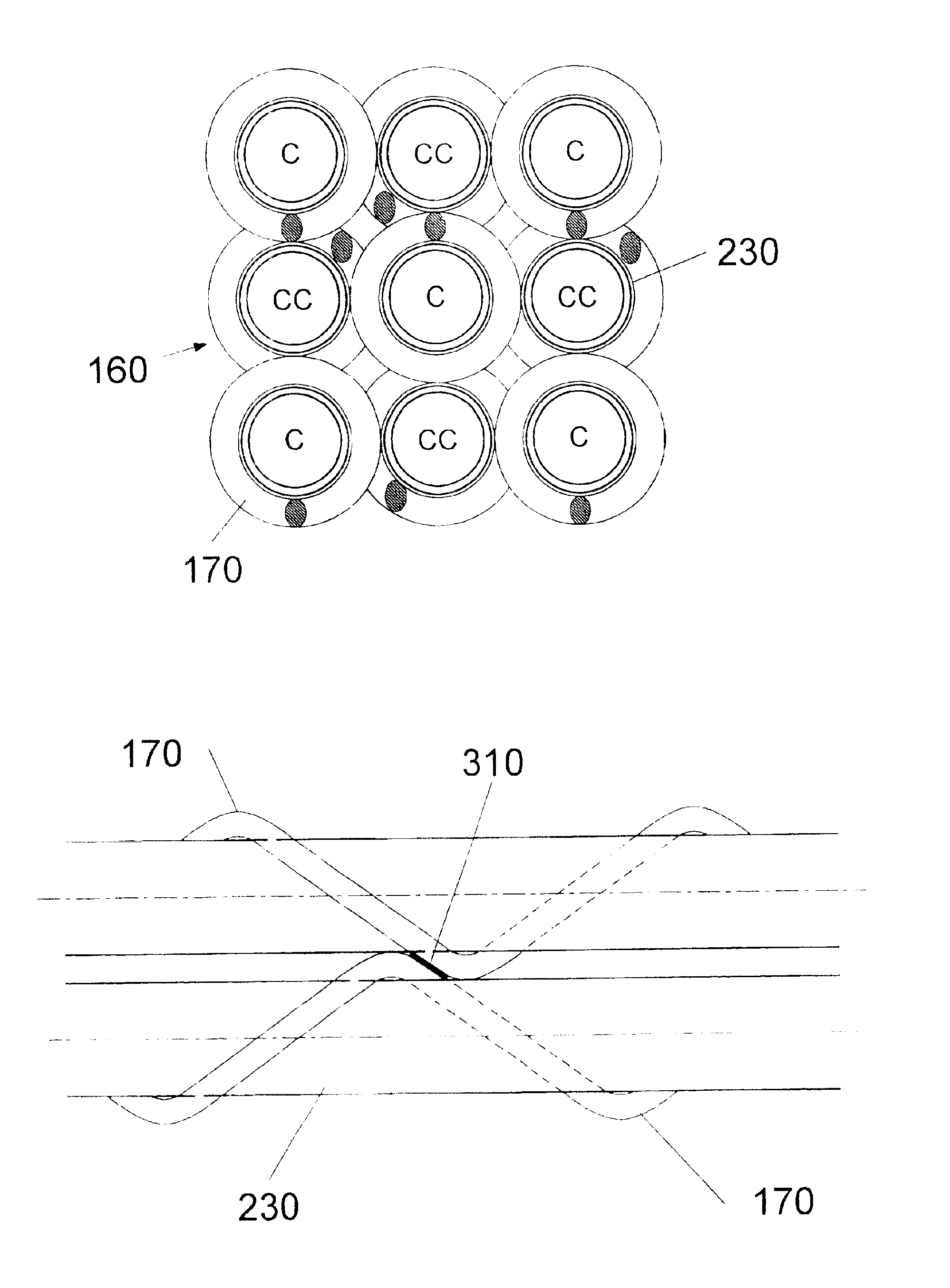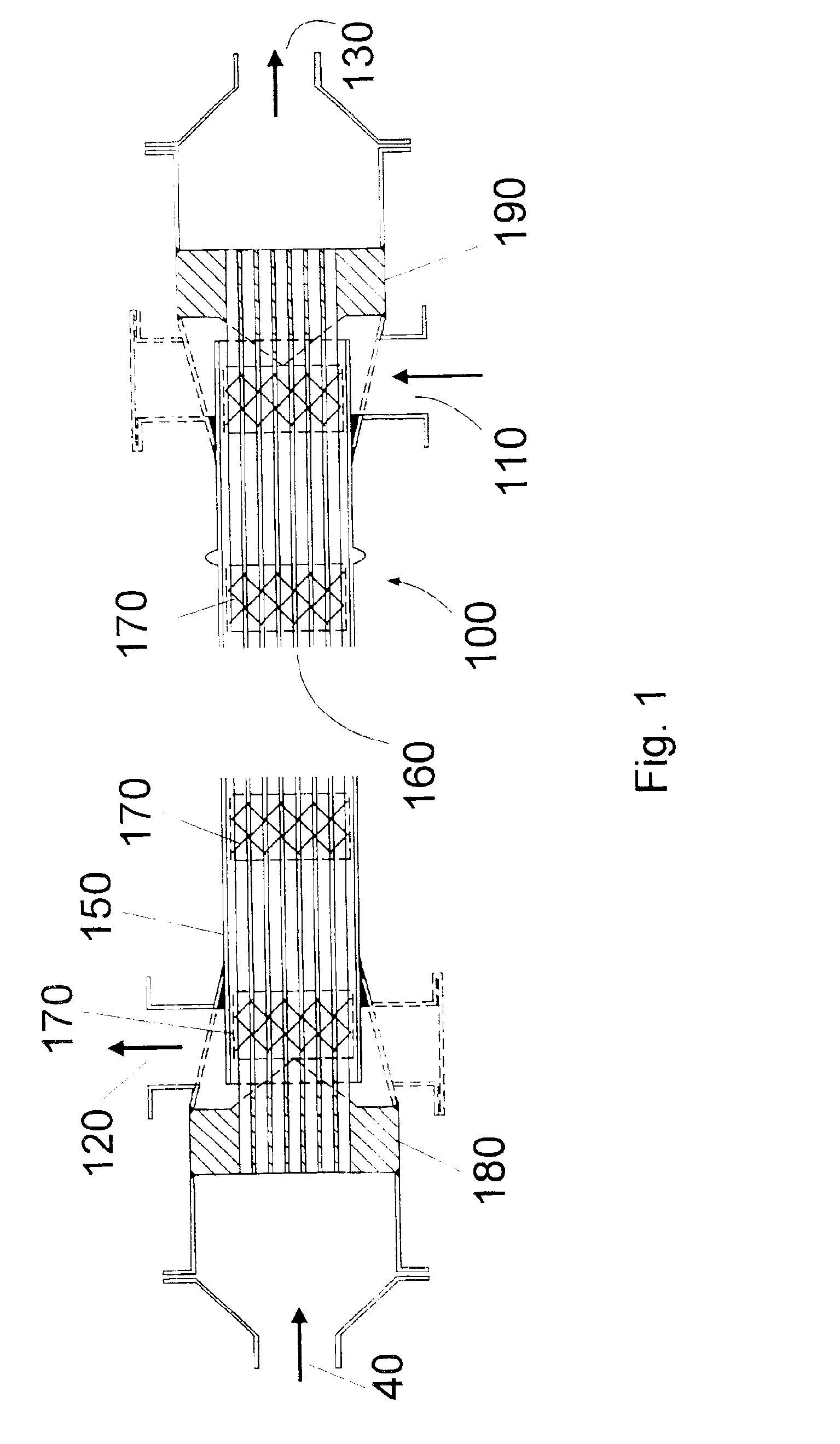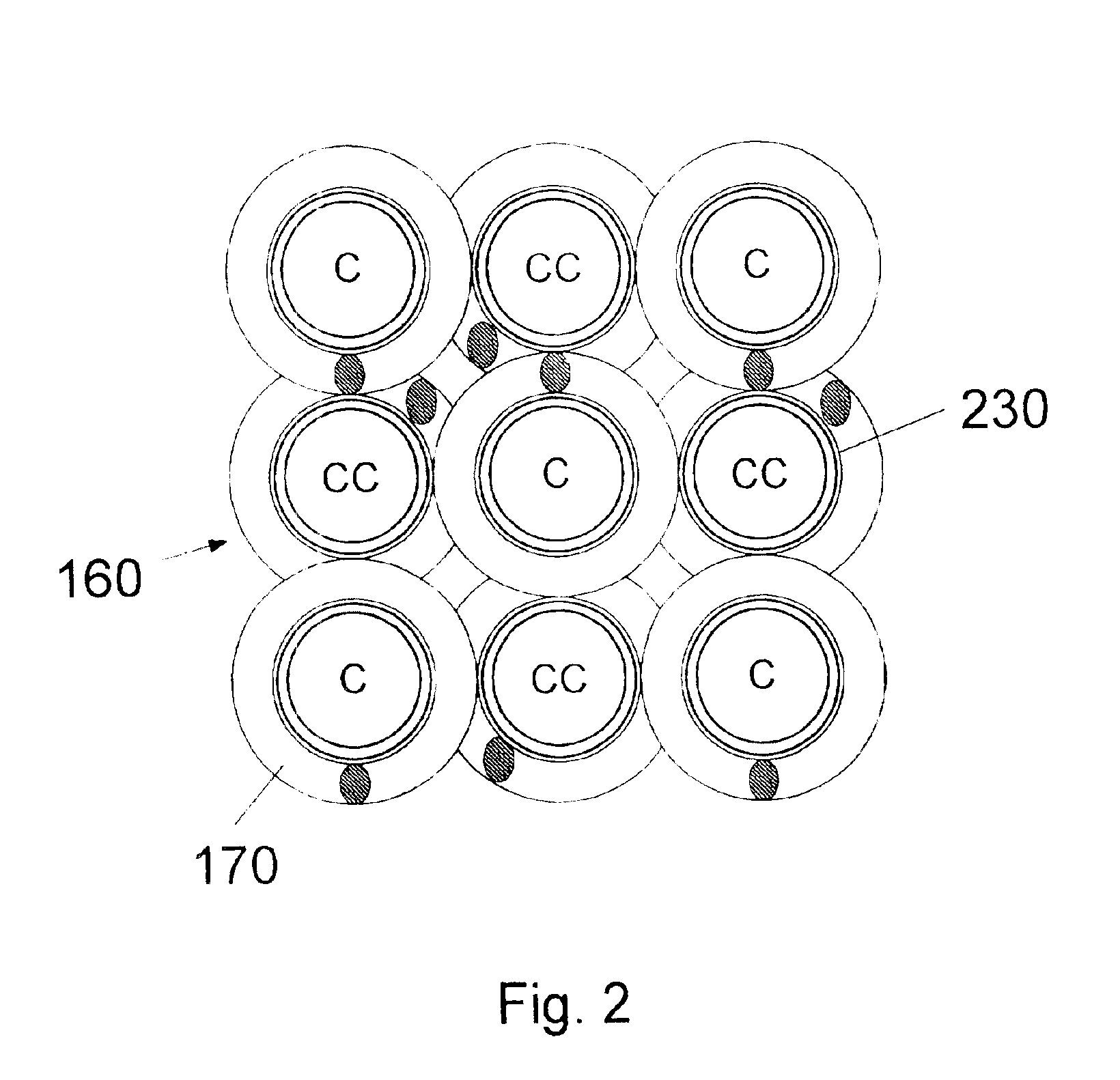Heat exchanger flow-through tube supports
- Summary
- Abstract
- Description
- Claims
- Application Information
AI Technical Summary
Benefits of technology
Problems solved by technology
Method used
Image
Examples
first embodiment
Turning now to FIG. 2, the novel support structure employed to support the tubes contained within tube bundle 160 is described. In a first embodiment as reflected by FIG. 2, coiled wires which have a diameter that is substantially equal to the space between the tubes comprising tube bundle 160 are used. The wire material is preferably comprised of erosion-resistant material such as stainless steel, titanium or other materials with similar metallurgical characteristics. In connection with the description herein, it will be understood by one of skill in the art that the term “wire” may encompass any or all of a wire, rod, strip or bar, all of which may be implemented in constructing the support structure of the present invention. As can be seen in FIG. 2, in the finished product, the wire material is wrapped around the tubes 230 to form coils that overlap with one another.
The coils structure is preferably constructed as follows. Coils 170 are prefabricated according to the specified d...
second embodiment
FIG. 5 illustrates the trimming requirements which may be undertaken in any embodiment of the present invention wherein the coil thickness is equal to any amount greater than one-half of the inter-tube spacing amount (i.e. any embodiment other than the above-described second embodiment). In such cases, it is possible to trim coil wire 510 so that it may make planar contact with its neighboring coil wire, for example in FIG. 5, coil wire 520. By employing trimming, and thus providing planar contact between coil wires 510 and 520, it is possible to create a larger contact area and thus provide a stronger weld. According to the teachings of the present invention, coil wires should be trimmed down to approximately one-half of the inter-tube space. For example, if the coil thickness of coil wires 510 and 520 were 70% of the inter-tube space, each of coil wires 510 and 520 should be trimmed down to approximately 50% of the inter-tube space at the contact point at weld 530.
third embodiment
FIG. 6 is an end view of the present invention wherein the tubes 610 are arranged in triangular pitch. According to the teachings of the present invention, in this case, some tubes 610 will be contained within the interior of coils 620 and others will not. The tubes 610 that are not contained within the interior of individual coils 620 are nonetheless supported by the exterior of the coils 620 which are adjacent to the relevant tube 610. Again, in this embodiment, it is preferable that coils which are adjacent to one another be wound in opposite directions (i.e. clockwise adjacent to counterclockwise).
In FIG. 6, the coil thickness is equal to the inter-tube spacing which results in an overlap as between the adjacent coils when viewed from the end as in the FIG. 6 view. Alternatively, but not shown, coil thickness in the triangular pitch case can be anywhere from 50% of inter-tube spacing to 100% of inter-tube spacing. As discussed above, in the case of 50% of inter-tube spacing, the...
PUM
 Login to View More
Login to View More Abstract
Description
Claims
Application Information
 Login to View More
Login to View More - R&D
- Intellectual Property
- Life Sciences
- Materials
- Tech Scout
- Unparalleled Data Quality
- Higher Quality Content
- 60% Fewer Hallucinations
Browse by: Latest US Patents, China's latest patents, Technical Efficacy Thesaurus, Application Domain, Technology Topic, Popular Technical Reports.
© 2025 PatSnap. All rights reserved.Legal|Privacy policy|Modern Slavery Act Transparency Statement|Sitemap|About US| Contact US: help@patsnap.com



